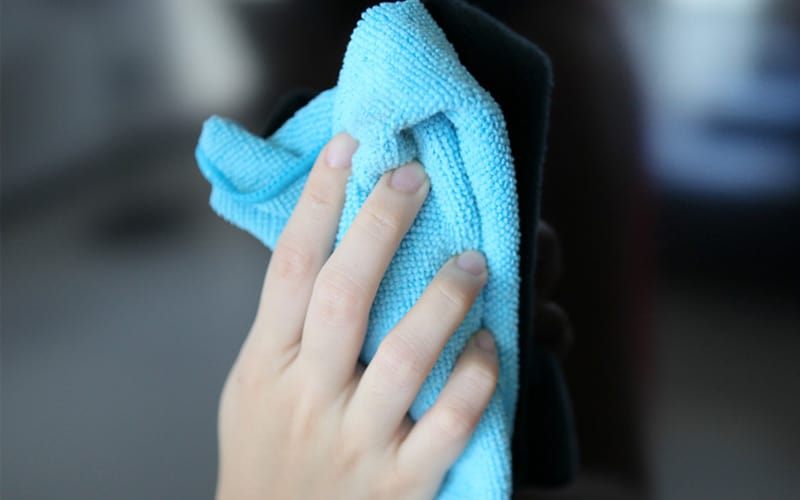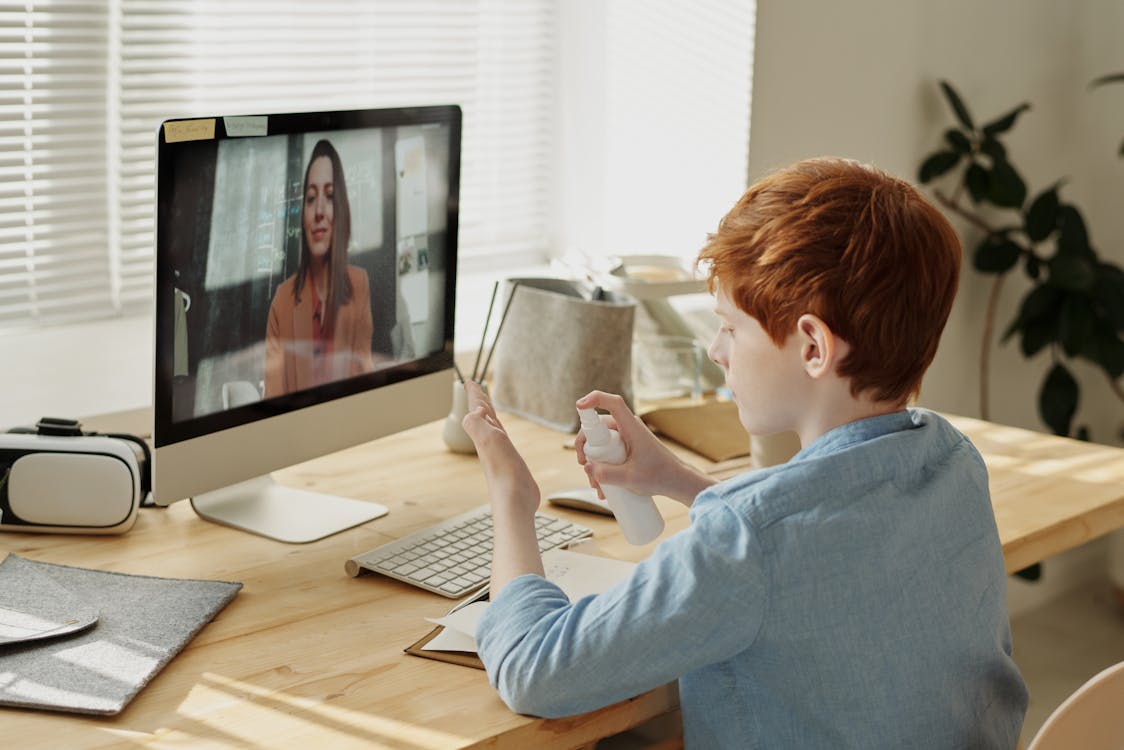How to Clean a Monitor Screen

Table of Contents
There's nothing worse when gaming or doing work and having those annoying specs of dust on your monitor screen, making words on the display look strange or creating an illusion of an enemy in the distance. Cleaning your monitor screen is necessary to remove grime, even if you may not want to do it. However, it requires careful handling to avoid damage.
Today, we're going to go through how not to clean your monitor screen. We will provide you with the main things to avoid. This will prevent potential monitor mutilation.
Prime Day is finally here! Find all the biggest tech and PC deals below.
- Sapphire 11348-03-20G Pulse AMD Radeon™ RX 9070 XT Was $779 Now $739
- AMD Ryzen 7 7800X3D 8-Core, 16-Thread Desktop Processor Was $449 Now $341
- ASUS RTX™ 5060 OC Edition Graphics Card Was $379 Now $339
- LG 77-Inch Class OLED evo AI 4K C5 Series Smart TV Was $3,696 Now $2,796
- Intel® Core™ i7-14700K New Gaming Desktop Was $320.99 Now $274
- Lexar 2TB NM1090 w/HeatSink SSD PCIe Gen5x4 NVMe M.2 Was $281.97 Now $214.98
- Apple Watch Series 10 GPS + Cellular 42mm case Smartwatch Was $499.99 Now $379.99
- ASUS ROG Strix G16 (2025) 16" FHD, RTX 5060 gaming laptop Was $1,499.99 Now $1,274.99
- Apple iPad mini (A17 Pro): Apple Intelligence Was $499.99 Now $379.99
*Prices and savings subject to change. Click through to get the current prices.
Additionally, we will give you strategies for successful completion. You’ll also receive information about the necessary products and required methods.
How Not To Clean Your Monitor Screen
So, you want to clean a monitor screen but want to avoid all the pitfalls? Let's look at the absolute don'ts when undertaking the delicate task.
Don't Spray Cleaning Fluid Directly Onto The Screen
Like a lot of cleaning methods throughout your home, if you're like me, you'll spray either cleaning fluid or a bit of polish directly on the areas and then wipe off with some sort of cloth.
This, however, is a bit no-no with monitor screens. Due to today's screens boasting an ultra-thin nature, spraying a water-like substance directly on there could result in causing water damage to your display, getting under the top layer, resulting in some serious pixel issues.
You might think, well water dries, right?
Yes, technically you are correct, but by that point, the damage has already been done and there's no saving your monitor.
Don't Use Window Cleaning Fluid/Rubbing Alcohol
You might think using these cleaning products is the best solution for your monitor screen. They do an impressive job on other things you use them on. However, they can actually strip the reflective layer on top of your screen. This layer prevents potential glare.
This is obviously bad, and if you were to continue using products like this on your monitor, you'll end up stripping more and more layers off the screen.
Don't Use Paper Towels Or Standard Rags
This might be a no-brainer for you cleaning experts out there, but avoiding using something like paper towels or a general-purpose cloth is a must when it comes to cleaning your monitor screen. This might seem a bit trivial, but it's actually integral to getting it right.
Neither paper-towels nor general-purpose cloths are designed for delegate devices like the monitor, thus meaning abrasion will almost certainly occur.
Importance of Cleaning Your Monitor Screen

Keeping your monitor screen clean is crucial for maintaining optimal performance and extending its longevity. Over time, dust, fingerprints, and smudges can accumulate on the screen surface, impacting the quality of the displayed images and overall viewing experience. Regular cleaning not only enhances the visual clarity, but also ensures the longevity of your monitor.
Dust, the common nemesis of electronics, can settle on the screen surface and obscure the images displayed. This accumulation can lead to a hazy or dull appearance, diminishing the sharpness and vibrancy of colors. By regularly cleaning your monitor screen, you can remove this layer of dust and restore its original clarity, ensuring that every detail is crisp and vibrant.
Fingerprints and smudges are unavoidable, especially if you frequently interact with your monitor screen, whether it’s for work, gaming, or entertainment. These smudges can leave unsightly marks and distort the displayed images, impacting the overall visual experience. Regular cleaning helps eliminate fingerprints and smudges, resulting in a cleaner and more immersive viewing experience.
Moreover, cleaning your monitor screen goes beyond aesthetics. Dust particles and oily residues can settle into the tiny crevices of the screen, potentially causing long-term damage. Over time, these particles can affect the screen’s performance and even lead to malfunctions. By maintaining a clean screen, you reduce the risk of dust buildup and extend the lifespan of your monitor.
To ensure optimal performance and longevity, it is recommended to incorporate regular cleaning into your monitor maintenance routine. This simple yet effective practice not only enhances the visual quality but also safeguards your investment. Remember, a clean monitor screen translates to a clearer, more vibrant display, allowing you to fully enjoy your digital experience.
Always refer to your monitor manufacturer’s guidelines and recommendations for the best cleaning practices specific to your model.
How To Clean Your Monitor Screen
Now we've got the worse things you can do to your monitor screen when attempting to clean it, let's get into what you should be doing to get the job done safely and successfully.
Step
Use A Microfiber Cloth
We’ve discussed the tools not to use for cleaning your monitor screen. However, a microfiber cloth is the ideal choice for safe cleaning. You can find expensive and budget-friendly options, but they all work similarly.
The positive charge of the cloth attracts dirt and grease, effectively removing anything on your screen without causing damage.
Now, let’s learn how to use the microfiber cloth properly:
- For dust removal, the cloth’s positive charge should easily handle it. Gently wipe the screen without applying excessive pressure. Avoid pressing too hard, as it can damage the front layer and pixels.
- If there’s tougher residue, lightly dampen the microfiber cloth. Be cautious not to make it dripping wet. The goal is to dissolve or dislodge the stains without using excessive water. Again, apply minimal pressure to prevent damage.
These methods should leave your screen looking like new. However, if you prefer an alternative approach or are hesitant to use a cloth, there’s another method worth considering.
Step
Use Compressed Air (Carefully)
So, you don't have the confidence to get in there with the microfiber cloth or simply want to avoid touching your screen at all, you can use a PC builder's favorite tool – compressed air.
Compressed air is a PC builder's best friend because you don't have to touch any of the components or get any potentially harmful substances involved with electronics. It allows you to blast away that dust with minimal chances of damage occurring. This can be applied to cleaning your monitor screen, blowing that dust away without having to touch the delicate display at all.
But won't the force damage the screen?
Well, yes, it will if you're too close, but if you're around one foot away and slowly press your compressed air's can you should be absolutely fine? You can pick a can up from a variety of places, but here's a link to a top product over on Amazon.
Compressed air is effective for removing dust, but it won’t eliminate stains or residue from the screen. If you’re dealing with such grime, a damp microfiber cloth is the only safe option.
We hope these methods helped you out in getting your monitor screen looking nice and shiny.
If you're a laptop owner and want to get your screen clean or simply want some laptop hygiene tips, Which Laptop has a great guide on how to do so. Head over to that article and get your laptop pleasant and fresh.

